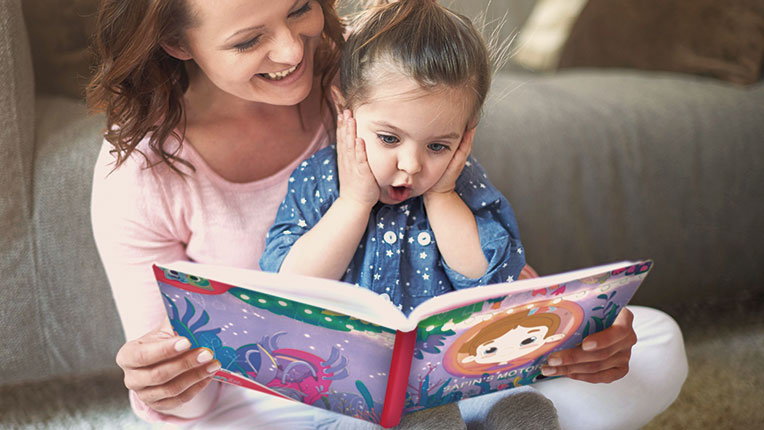Speaking, writing, and reading are the three guiding axes of literacy, which goes far beyond showing a child how to read and write. It also means teaching them to understand what they’ve read and to make use of the knowledge. We know, however, that it is sometimes difficult to arouse children’s interest in language. With this in mind, we are going to list and explain some suggestions of dynamic games that you can use to encourage your kids to read. Check them out!
From dramatized monologues to the use of digital readers, there are many dynamic reading techniques that can help children become interested in the world of words. Below, find out more details about some activities to put into practice in the classroom or at home. Remember that, in times of remote learning, most of them can be adapted to the virtual environment.
Reading with a word search
This is a physically interactive way to apply language skills in the early years of school, when children are learning to read and understand words. It basically consists of a search and assimilation game that contributes to the development of the student’s reading skills.
To start this reading activity, the teacher, parent or another educator must choose ten words and write each twice on separate cards, thus producing a total of twenty cards and two sets. The next step is to hide one of the sets around the room, such as on the floor, on a bookshelf, on a bulletin board or on a desk.
Then, the educator should give the second set of cards to the student so that they can look for the word that matches the first card they are holding. It is possible that the child may find a different card, but in this case, they must recognize that it is not the same word as the one in their hands and continue the hunt.
Reading circle
Another idea of an engaging literacy activity is a reading circle. Once seated in a circle, each child reads a passage of text, which should vary across different genres so that the children’s language repertoire is expanded.
In this kind of reading exercise, it is important to select quality materials and content that goes beyond fairy tales. The educator may, for example, bring news items that deal with subjects of interest to children and invite them to debate.
In the reading circle, children can learn about the characteristics that distinguish textual genres, the uses and functions of writing and the distinctions between written and oral expression. In addition, they get used to the language and elements contained in various types of texts.
Book Club
Creating a book club is a fun way to set goals and encourage reading in a creative way. The meetings can take place every month or every two weeks, for example, and all participants must read the book that is on the agenda and come to the book club ready to discuss the plot and raise relevant issues.
To make the book club a democratic space, ask the students to propose some titles and hold a vote to choose which book to read next. Another idea is to host the meetings in different environments, such as a playground, library, or park. This activity can also be done remotely, over the internet.
Facebook News Feed
The presence of technology in the daily routine of most children and teenagers is unquestionable. So why not accept it and incorporate it in reading activities as well? This is an assured way to engage with your children.
It is difficult to find a primary school student who does not have a Facebook profile. The idea, then, is to convert reading into the form of a news feed timeline on this social network. How? Very simple: ask the students to collectively transform a passage from the book into the everyday conversation of a Facebook post.
To do this, they can create profiles with the characters’ names and start a news feed, that is, a dialogue in which each one character says something, and the story unfolds from there. Adding pictures, speech bubbles, GIFs, emojis, memes, links and whatever else is common in social networks is a great way to give a comical air to the task.
Dramatised Monologue
Literature is a great tool to stimulate children’s enthusiasm for reading and writing. However, the educator needs to be able to make the moment of reading more attractive and creative, i.e., to enable the child to escape a little from the traditional to show that these moments can also be fun.
One suggestion is to dramatize the text after interpretation. This proposal has everything to provide moments of relaxation while your child develops skills such as reading and comprehension, speaking without inhibitions and bodily expression.
Starting with a dramatized monologue is not difficult. Just choose a scene from the text, preferably a short and uncomplicated passage, and ask them to engage with the story during the performance of the reading activity.
Digital Readers
Students born in the Digital Age love activities that involve electronic devices. One way to combine reading with technology is to introduce them to digital readers such as Kindle or Lev. With these, it is possible to read several digital books (called eBooks) without having to carry extra weight in their backpack.
Another option is to install reading applications on smartphones or tablets. Just like e-readers, they allow you to read multiple eBooks at once and are light to carry.
In this way, reading activities can be adapted to children’s preferences, involving them more and more in the practice of reading books.
Recreational activities, such as those mentioned in this text, are essential for the formation of engaged, critical and participatory readers as children encounter different textual genres and learn to love literature in all its forms.
